the Node’s 2019 highlights
Posted by the Node, on 7 January 2020
A new year is a good opportunity to look back on the one just passed, and whether you’re a Node regular or new to us, this selection of our 2019 highlights will hopefully be of interest, particularly if you’re interested in contributing something and looking for inspiration. We are a community site for and by developmental biologists – it’s free and easy to post, just sign up here. And if you don’t already, be sure to follow us on Twitter and Facebook. Happy new year!
Top 5 most-read posts published in 2019
Congratulations to Joachim Goedhart (twice, and for the second year in a row) and Shinichi Morita for making our top 5 most-read articles this year.
- the Node Calendar competition – vote here, vote now! (look out for a new cover competition in the summer)
- User-friendly p-values by Joachim Goedhart
- Data Visualization with Flying Colors by Joachim Goedhart
- A day in the life of a Kabuto-mushi (rhinoceros beetle) lab by Shinichi Morita (Dec 2018 but most reads in 2019)
- December in preprints (our monthly preprint list remains popular)
Behind the paper stories
We love to hear the stories behind the latest papers – these might be personal recollections or more data-focused, and can take advantage of our informality and lack of word limit. Here’s ten of my favourites from 2019:
- Collaboration: All the things we cannot see (alone) by Miriam Rosenberg and Suparna Ray
- Plant stem cells strive towards equality by George Bassel and Iain Johnston
- A domino effect on brain developmental evolution by Jorge Torres-Paz
- A biology-modeling crosstalk to uncover feather pattern evolution by Richard Bailleul, Jonathan Touboul and Marie Manceau
- “My balance comes from instability” thought Herzog (Saul Bellow, Herzog)
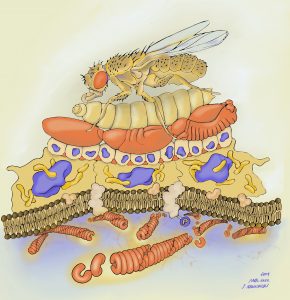
Illustration by Stephanie Nowatarski, part of Zelha Nil’s post by Zelha Nil
- Down from the crest to clear the dead by Yunlu Zhu and Sarah Kucenas
- Inflate your embryo by Julien Dumortier and Mathieu Le Verge-Serandour
- Discovering the Genetic Basis of Mimetic Color Diversity in Bumble Bees by Heather Hines
- Forces maintain order between cells by Antoine Fruleux and Arezki Boudaoud
- Beyond morphogen signaling by Dörthe Jülich & Scott Holley
Lab life
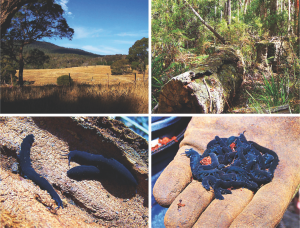
We had two new entries to our ‘Day in the life of an X lab’ series, which showcases the diversity of model systems used in developmental biology. Kohei Oguchi from Tokyo University told us all about termites, while Sandra Treffkorn from the University of Kassel in Germany versed us in velvet worms (onychophorans).
We’re now up to 42 in the series (Arabidopsis, Ascidian, Axolotl, Bat, Butterfly, C. elegans, Capitella, Chicken, Cnidaria, Colonial tunicate, Coral, Cricket, Ctenophore, Drosophila, ES cells, Gar, Gecko, Honeybee, Hydractinia, Lamprey, Larval-microbe, Maize, Marchantia, Mayfly, Moss, Mouse, Oikopleura, Onychophoran, Parhyale, Planaria, Platynereis, Rhino beetle, Sea urchin,
Shark, Siphonophore, Skate, Spider, Sponge, Termite, Turtle, Xenopus, Zebrafish). Is your model missing? Get in touch.
Art and science
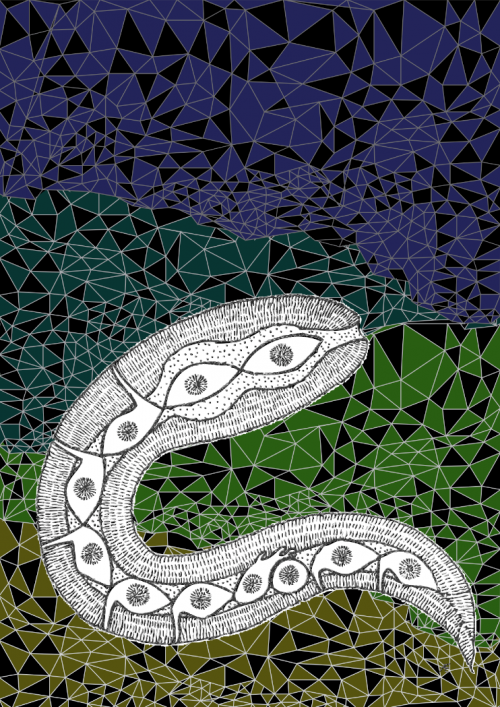
In March we posted a fascinating account from an artist (Gemma Anderson, University of Exeter) and a cultural historian of science (Janina Wellmann, MECS, Leuphana University Lüneburg) who visited the EMBL. Their outsider perspective on how science is done is well worth the read.
In October we interviewed Annabel Ebbing (the Hubrecht Institute in The Netherlands), first author of a Development paper on C. elegans neuroblast migration. She designed a beautiful piece of worm art that made Development’s cover – we heard about what science and art meant to her.
Science on tour
We published many meeting, workshop and course reports this year:
- Santa Cruz Developmental Biology Conference by me and Jordan Ward
- Woods Hole Embryology Course x3 by Andrea Attardi, Aastha Garde, Anneke Kakebeen
- 1st Crick-Beddington Developmental Biology Symposium in London x2 by Vicki Metzis and Alex Eve
- Evo-chromo: towards an integrative approach of chromatin dynamics across eukaryotes in Wiston House by Alexander Blackwell and James Gahan
- Polyploidy in Organ Development, Repair, and Disease in Bar Harbor by Adrienne Roeder
- Young Embryologist Network in London by Alex Eve
- Chromatin-Based
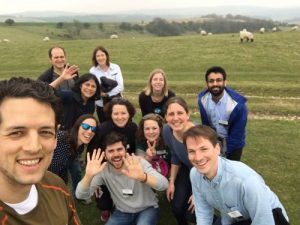
Happy participants at the Chromatin workshop Regulation of Development in Witson House x2 by Abby Buchwalter and Martyna Lukoseviciute
- New Frontiers in the Brain: Unexpected Roles of the Choroid Plexus-Cerebrospinal Fluid System in Health and Disease in Wiston House by Aida Rodrigo Albors, Laura Pellegrini and Neil Dani
- Understanding Birth Defects in the Genomic Age in Wiston House by Ashish Deshwar and Nicole Edwards
- Latin American Society for Developmental Biology Meeting in Buenos Aires by me
We also heard from two recipients of Travelling Fellowships from the Company of Biologists: Miquel Sendra, who went from Madrid to Washington, and Estefanía Sánchez-Vásquez, who went from Buenos Aires to Pasadena.
The practice and promotion of developmental biology
Regular Node contributor Joachim Goedhart posted four commentaries on user-friendly p-values, experimenting with non-anonymous peer review, barrier-free use of colors in images and graphs, and data normalization. We also heard more about data visualisation from Helena Jambor in her post on non-zero baselines.
We posted three perspectives on the effects of preprints on research. Katherine Brown reported from the European Developmental Biology Conference 2019 Preprint Workshop (earlier in the year, Katherine also shared her thoughts on publishing Drosophila research). Mate Palfy and Gautam Dey considered whether preprints and science news can coexist. Finally, a team of preLighters responded to a meta analysis on bioRxiv preprints.
Melissa McCartney explained why introducing biology undergrads to the primary literature is valuable, and we heard a Chinese perspective on learning developmental biology from Guojun Sheng and students.
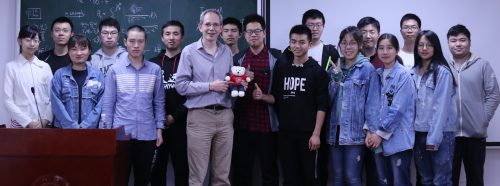
Things to look out for in 2020
January The launch of the Node Network, a global directory of developmental and stem cell biologists. You may have filled out our survey in the summer – the site is nearly there now and we’d love as many people as possible to sign up for it.
March(ish) We will run a community survey all about the Node. What can we do better in the coming years? What type of content do you want to see more (or less) of? What are we missing? Look our for our survey early in the year.
April Cast your mind back to April 1st, 2010 – Gordon Brown was UK Prime Minister, Clash of the Titans (eh?) topped the cinema charts, atmospheric carbon dioxide was 389ppm…and the Node was launched, publishing its first post (the first of 2403 and counting). Ten years on and it’ll be a good time to reflect on the past and look forward to the future. We’ll probably have some cake in the office and metaphorical cake on Twitter!



 (3 votes)
(3 votes)